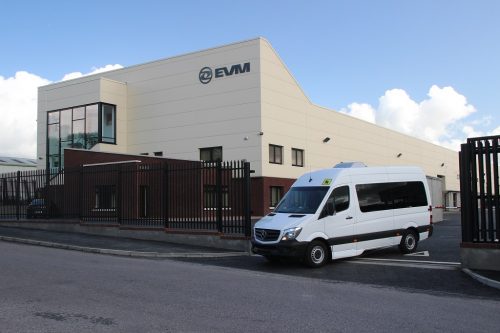
Gareth Evans visits the Kilbeggan factory of Irish minibus converter EVM, where he learns about the firm’s processes and finds out the new Sprinter school bus, as well as a more general update on the business
Avisit to the Irish Midlands factory of vehicle converter EVM last week found a buoyant facility – as well as the first look at the latest addition to the firm’s product range – a 12-seater Mercedes-Benz Sprinter-based school bus.
Located within sight of Kilbeggan’s famous distillery, the factory lies approximately an hour from Dublin, thanks to the M6 motorway.
We will build 300 Sprinter units this year,” enthused EVM Managing Director, Danny Mc Gee, over a welcome coffee consumed in the recently completed administration block at the front of the plant.
Also present was Production Director Ivor Jones who joined Danny in 2011. Essentially, Danny runs the UK sales operation and Ivor manages the factory operation, aided by Patrick Farnon, the company’s Financial Controller.
“Today we’re going to focus on EVM products, i.e. the 300 series which roll out of this factory this year. Coach built products will follow from here in due course – probably when the new Sprinter becomes available,” explained Danny.[…]
By subscribing you will benefit from:
- Operator & Supplier Profiles
- Face-to-Face Interviews
- Lastest News
- Test Drives and Reviews
- Legal Updates
- Route Focus
- Industry Insider Opinions
- Passenger Perspective
- Vehicle Launches
- and much more!


